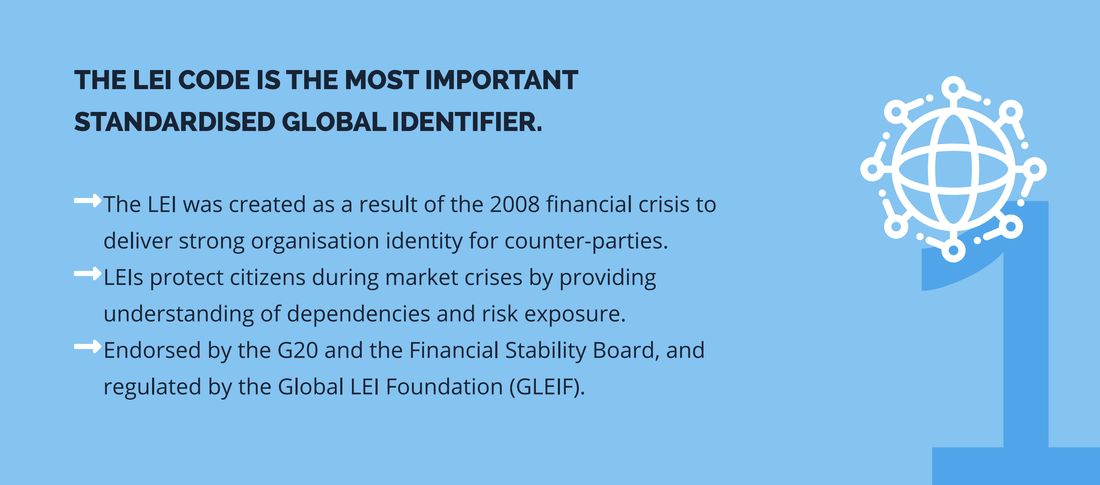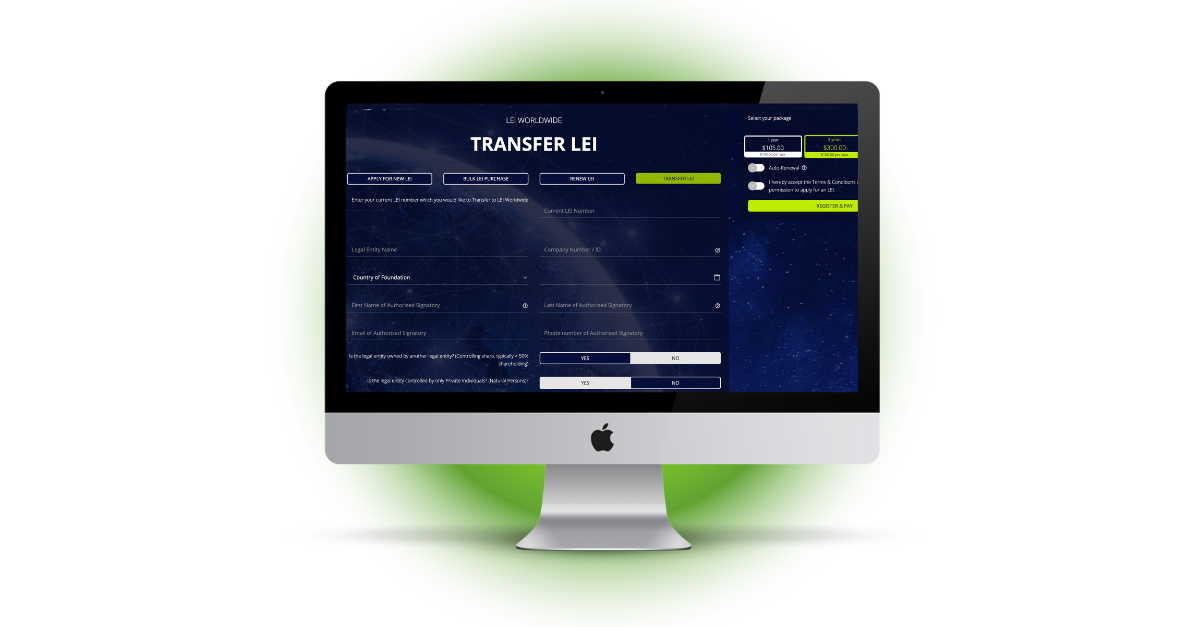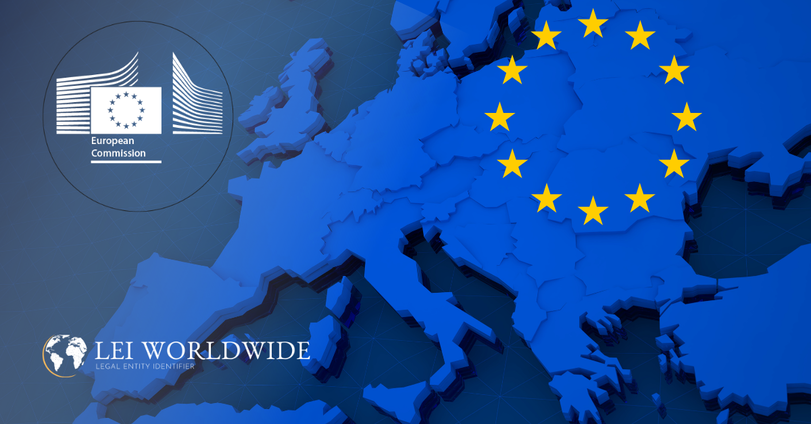
Context on the lei system and lei numbers
A Legal Entity Identifier (LEI) is a unique 20-character identifier code that is assigned to legal entities engaging in regulated financial transactions. An ELF Code is a sub-set of codes that identify the legal entity type.
Any legal entity may apply for an LEI code, however most regulated organisations will need to obtain one under a litany of global regulations, most commonly known:
- Markets in Financial Instruments Directive II (MiFID II)
- The Dodd-Frank Wall Street Reform and Consumer Protection Act
- Basel III
- Solvency II Directive
The LEI is used in practice by regulators to identify counterparties to financial transactions globally, in order to increase transparency in the financial system and reduce counterparty risk.
The LEI system is maintained by the Global Legal Entity Identifier Foundation (GLEIF) and overseen by the Financial Stability Oversight Council (FSOC) in the United States, and the Financial Stability Board (FSB) internationally.
The LEI code is used to identify a specific legal entity, such as a corporation or a partnership, and it stays with that entity throughout its lifetime.
The fight against financial crime is an ongoing battle for financial institutions and other regulated entities.
One of the key tools that organizations use to detect and prevent financial crime is the process of Know Your Customer (KYC) and Anti-Money Laundering (AML) checks. The Legal Entity Identifier (LEI) can play an important role in enhancing the effectiveness of these checks and helping organizations to more easily identify potential criminal activity.
(LEI) applicable to legal entities, which include, but not limited to, unique parties that are legally or financially responsible for the performance of financial transactions or have the legal right in their jurisdiction to enter independently into legal contracts, regardless of whether they are incorporated or constituted in some other way (e.g. trust, partnership, contractual). It includes governmental organizations, supranationals and individuals when acting in a business capacity[1], but excludes natural persons.
- The International Standardisation Organisation (ISO)
The LEI in KYC (Know Your Customer)
KYC (Know Your Customer) onboarding is the act of verifying the identity of a potential or existing customer, (natural person or legal entity but in this context legal entity) and assessing any potential risks for disapproved or illegal activities such as money laundering or financing of terrorism. The Legal Entity Identifier (LEI) can be used as part of this process to uniquely identify the legal entity that is opening an account or engaging in a financial transaction.
By using an LEI, financial institutions and other regulated entities can more easily and accurately identify their customers, and link together any previous transactions or accounts that have been opened by that legal entity. This can help to reduce the risk of financial crime and ensure compliance with regulatory requirements as listed above.
During the KYC onboarding process, the FI (Financial Institution) will ask the entity to provide the LEI, in order to verify the identity and confirm the legal name, address, and registration of the entity. This ensures that the entity is an actual legal entity and is not a shell company or one created for illicit purposes. This is being more widely adopted since it was approved by the FSB and the UK introduced the Electronic Trade Documents Bill.
The use of LEI in KYC onboarding is often a compliance requirement but it is recommended as it is a globally recognized standard for identifying legal entities, it can improve the accuracy and efficiency of the KYC process.
In a recent survey by GLEIF, the FSB noted in their circular:
“Some respondents emphasized that the LEI can play a positive role in reducing de-risking by providing a credible global identity to the entities, particularly small and medium-sized enterprises (SMEs) or non-profit organisations in developing countries or conflict zones, which are excluded from payments and financial transactions due to increasingly stringent KYC/AML requirements.”

AML (ANTI-MONEY LAUNDERING)
AML regulations are in place across the EU, US, Asia and globally in order to detect and deter money launderers from using the financial system to conceal and move the proceeds of their illicit activities.
Financial institutions and other regulated entities are required to have AML programs in place and are required to identify and report any suspicious transactions to the appropriate authorities.
The Legal Entity Identifier (LEI) can be used to enhance Anti-Money Laundering (AML) efforts. Many companies will be required under law to register an LEI number.
By using an LEI, financial institutions and other regulated entities can more easily and accurately identify their customers and link together any previous transactions or accounts that have been opened by that legal entity. This can be useful in AML efforts as it can help to detect and prevent potential money laundering activities by identifying patterns of suspicious transactions linked to a specific legal entity.
For example, if a financial institution suspects that a customer is involved in money laundering, it can use the customer's LEI to identify any other accounts or transactions that have been opened by that legal entity. This can help the institution to more easily detect and prevent illegal activities by identifying patterns of suspicious activity.
The use of the LEI in KYC and AML checks is not always mandatory but it is highly advised, as it is a globally recognized standard for identifying legal entities, it can improve the accuracy and efficiency of internal processes.
With the implementation of the machine readable and system agnostic LEI, organizations can easily confirm the identity of their customers, improving the effectiveness of their KYC and AML checks and reducing the risk of financial crime, and it goes hand in hand with similar identifier such as the ISIN.
By using the LEI, organizations can also be better prepared to comply with regulatory requirements, such as MiFID II, EMIR, SFTR and the US Financial Transparency as we mentioned earlier.
In conclusion, the use of the GLEIS (Global LEI System) can significantly enhance the ability of organizations to detect and prevent financial crime by bringing more transparency to Who is who and organisation structures.
It provides a unique and consistent way of identifying legal entities, which makes it easier for organizations to confirm the identity of their customers and link together related transactions.
With the LEI, financial institutions and other regulated entities can improve their KYC and AML checks, and more easily detect patterns of suspicious activity, that could indicate illegal activities, such as money laundering or financing of terrorism.
A recent study conducted by McKinsey shows that by adopting the GLEIS, FIs would collectively make annual savings of 2 to 4 Billion USD, by simply replacing outdated KYC/AML processes.
You can access the LEI Finder tool here to search for any existing LEI code.

LEI Renewal Now Mandatory in Canada – A Key Contrast with Australia’s Approach

Swiss Business Registry Integration Marks Major Step Toward Global LEI Utility

EU Commission propose new AML/CFT Regulations featuring the LEI System
